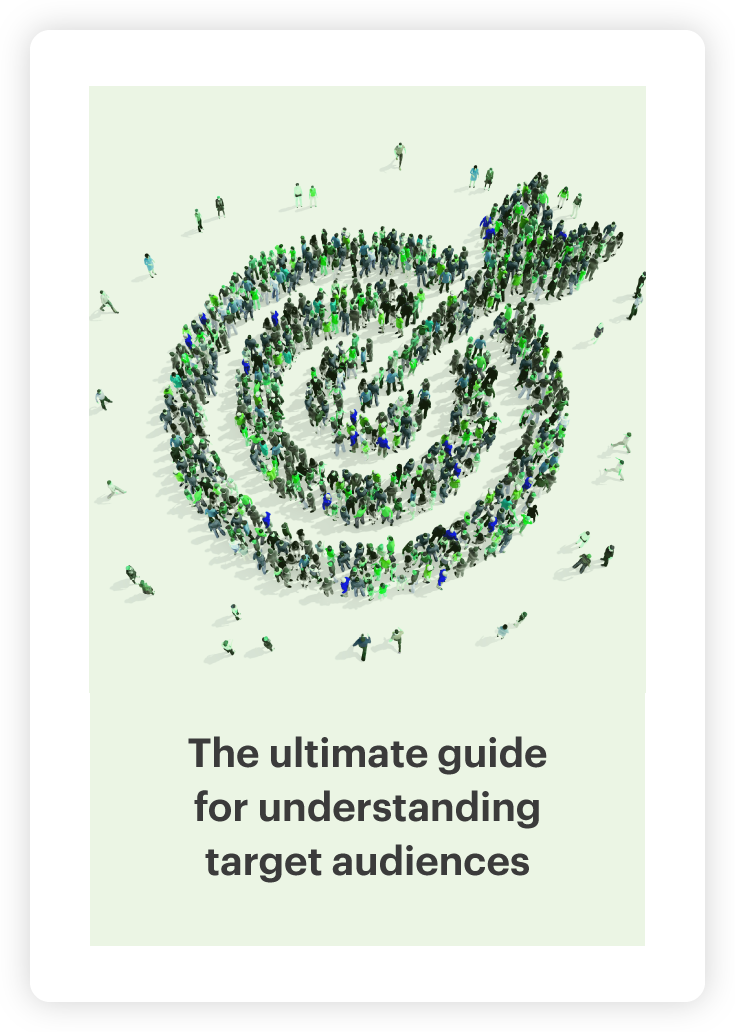Analyzing consumer attitudes toward 3 inclusive, body-positive lingerie brands

Over the past few years, the body positivity movement has gained unprecedented momentum. And as social beliefs change, so too do trends in fashion and retail. Body positive lingerie has saw one of the biggest transformations, with many brands adapting their advertising and product collections to empower women of all shapes, sizes and skin tones.
Historically, any garment labelled “nude” was represented by a single light shade of beige, but thankfully body positive lingerie brands are changing the mould. By expanding underwear ranges to include various shades of “nude”, in order to match a broad spectrum of skin types, inclusive lingerie retailers are shaping a new future for the industry and the people who wear it. The latest to join the movement? Marks & Spencer, with their ‘Nothing Neutral About It’ collection.
In the midst of such progressive change for the fashion industry, we got curious. Are these lingerie brands striking the right chords with their consumers? And how do popular brands like Skims, Savage X Fenty and now M&S set themselves apart?
Using Relative Insight, a unique text analysis platform, we sought to find out. So, we compared brand mentions of Skims, Savage x Fenty and M&S Lingerie on Twitter to discover the differences in what consumers are saying. Relative Insight pinpoints the statistically significant differences in language between two or more data sets. By digging deeper into these organic conversations, we can better understand brand perception, and use text analysis as a sophisticated means of competitor benchmarking.
M&S
The new M&S lingerie range has been praised for its inclusive range of skin-coloured garments. Brand mentions were 63.5x more likely to include words such as skin tone and shades. Consumers used the word inclusive to describe the range, which reflects the brand’s aim to create a collection that for everyone – with more colours, more sizes and more choice.
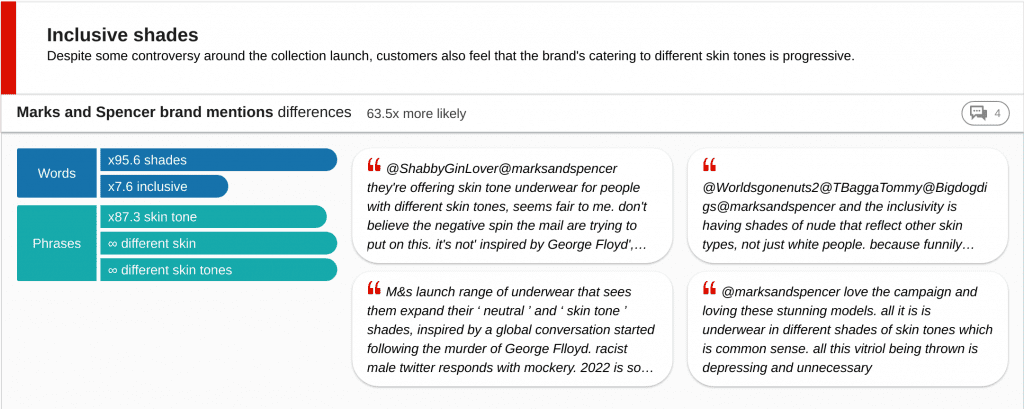
However, the launch has also been problematic. In their press release, M&S claimed that the collection was “fuelled by the global conversation on racial inequality, following the horrific death of George Floyd”. People used Twitter as a platform to express their anger towards this marketing manoeuvre, accusing M&S of virtue signalling and politicising underwear. This highlights the crucial importance of choosing the right language in your messaging in order to land positively with your consumer base. In comparison to their competitors, M&S seem to have missed the mark in their communications.
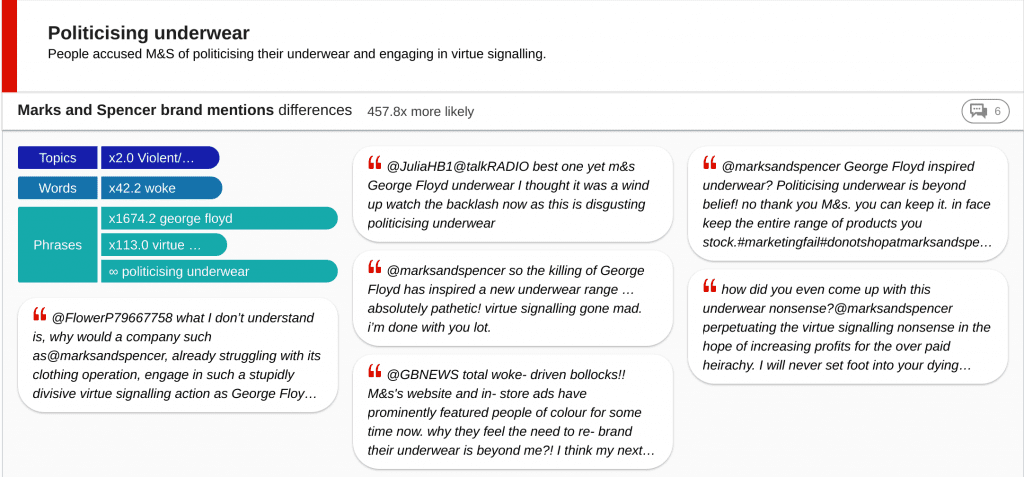
Skims
Since finding fame on hit reality TV show Keeping Up With The Kardashians, Kim Kardashian West has added model, student of law, actress and businesswoman to her resume. In 2018, she launched another business venture: shapewear brand, Skims.
In comparison to competing body positive lingerie retailers, Skims consumers are fierce lovers of the brand and huge fans of Kim Kardashian herself. Brand loyalty is 7.7x more likely to come through in mentions of Skims, with audiences using positive words such as obsessed, want, need, and love. Skims has clearly established itself as the must-have lingerie brand of the century. This analysis highlights how celebrity endorsement can have a huge influence on consumer perception.
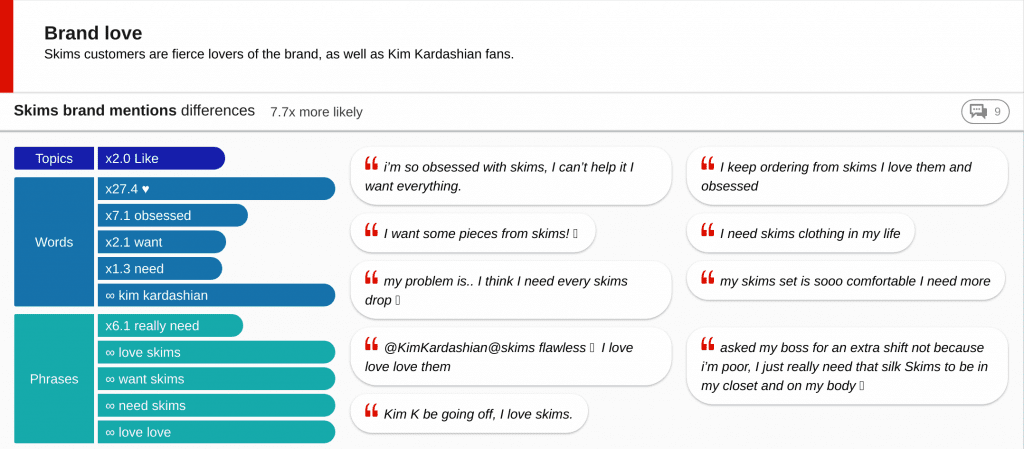
We also found that people who mention Skims are 6.8x more likely to use sensory adjectives such as comfy, silky and soft. This suggests that consumers are more concerned with the texture and quality of Skims products, in comparison to competitors – an insight which could be leveraged in the Skims’ marketing strategy.
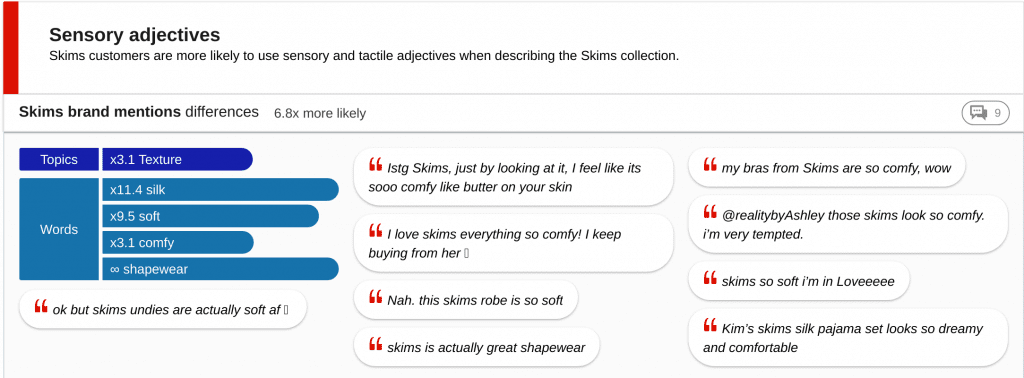
Savage x Fenty
Savage x Fenty is a lingerie line created by global superstar, Rihanna. But what sets Savage apart from other body positive lingerie collections is their bold marketing strategy and efforts to embed beauty inclusivity and diversity into brand ethos.
Mentions of Savage x Fenty highlighted various areas where Savage has pushed boundaries in a typically narrow-minded industry. Namely, the Savage x Fenty Fashion Show whereby models of all gender identities, sexualities, skin colours, and sizes showcased Rihanna’s designs. Consumers were more likely to draw comparisons between Savage x Fenty and the infamous Victoria’s Secret Fashion Show which notably lacked body diversity.
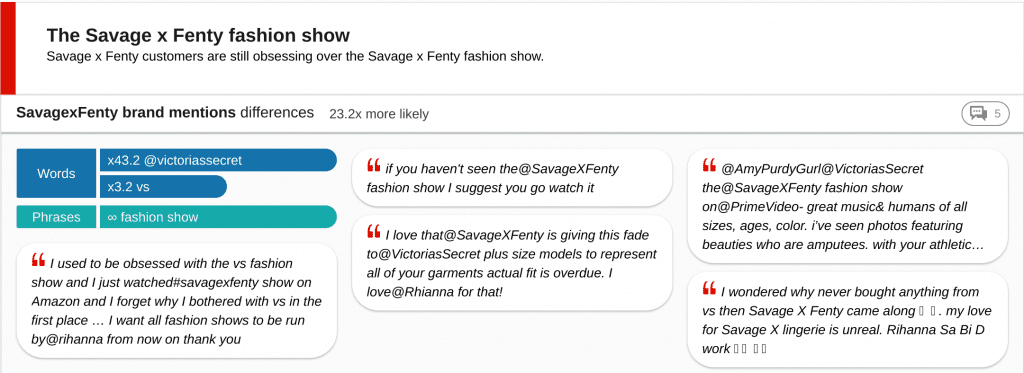
Our analysis found that consumers are 4.4x more likely to describe the brand as sexy and hot. Savage has carved out a niche in this market, blurring the definition of beauty and enabling every single person to feel both sexy and represented. Savage x Fenty fans are also twice as likely to use interjections such as oh, yes, damn and wow, showing a genuine enthusiasm for the brand and products in comparison to competitors.
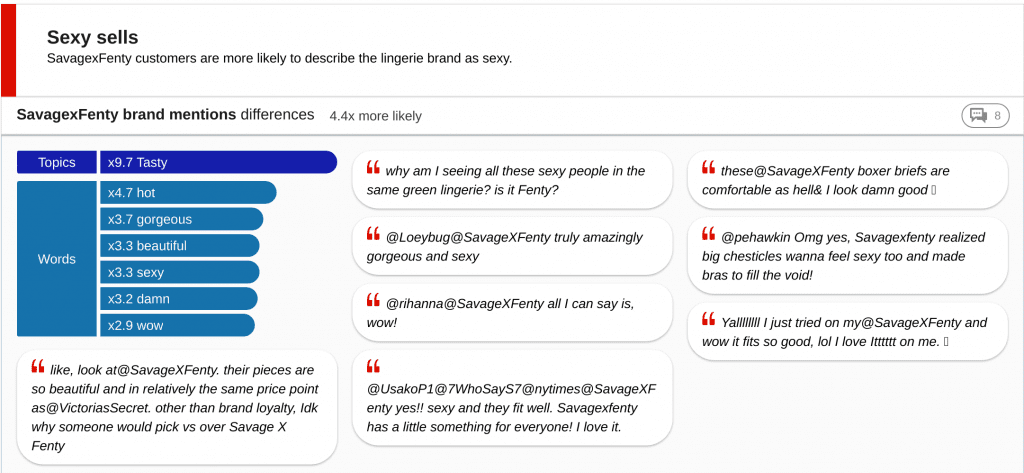
By comparing and analysing brand mentions, you can discover powerful linguistic insights which enable you to track how people perceive your brand in comparison to your competition. However, comparison can also help you to understand the strengths and weaknesses of competitors in order to find a gap in the market and enhance your marketing strategy.
